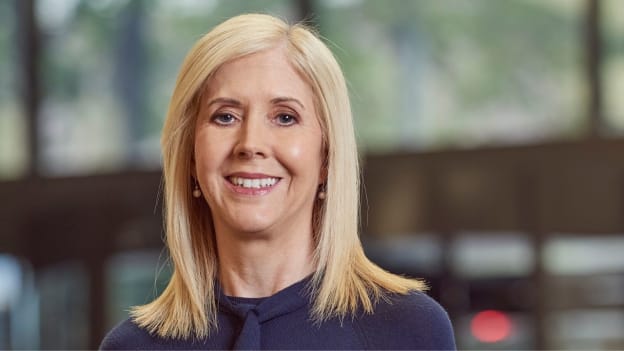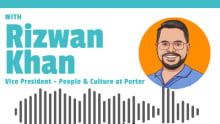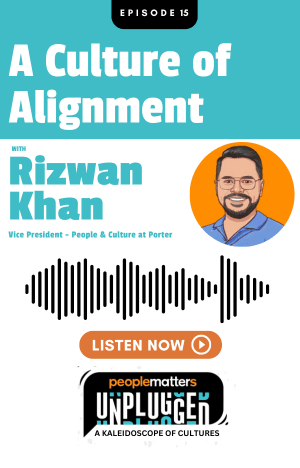Steering the wheel of diversity & inclusion amidst COVID-19

The coronavirus pandemic has roiled the nation, leaving businesses with little choice but to adapt and adjust. As company leaders have pivoted to address the needs of their most important business asset—talent—one thing has become abundantly clear: those with strong diversity and inclusion initiatives already in place have had an easier time steering their companies through the pandemic’s choppy waters.
But even for companies with a solid diversity and inclusion foundation, the novel virus has forced diversity heads to think creatively about how best to support their talent, while still making strides on representation and belonging in the midst of global hiring freezes and layoffs.
In this interview with Sarah McCann-Bartlett, CEO, Australian HR Institute (AHRI), shares how D&I can be practiced in the times of crisis.
Sarah is currently serving as the CEO of AHRI. Sarah comes with the advanced business, commercial, and marketing skills, developed from senior positions within a very competitive industry, and also global experience as the CEO of a major industry membership body during the last eight years in the United Kingdom. She also has a close understanding of regulatory and public policy issues in Victoria and Australia.
An economist by education, Sarah has held a number of senior executive positions at the Victorian Building and Plumbing Industry Commissions, including as Deputy Commissioner. Sarah has also held roles representing and supporting the Australian wool industry with the Australian Wool Corporation and its successor The Woolmark Company in Melbourne, the UK, and New York where she held the role of President and Group Manager, Americas. Sarah holds Commerce and Arts degrees from the University of Melbourne, an MBA from Monash University, and postgraduate qualifications in marketing. She is a Fellow of the Australian Institute of Company Directors
Here is an excerpt from the exclusive interview with Sarah McCann-Bartlett, CEO, Australian HR Institute (AHRI):
Q1. With businesses battling the immediate challenges of COVID-19 will the diversity agenda be pushed back or accelerated?
Initially, a lot of important agendas have taken a back seat as companies have had to respond to COVID-19 at a rapid pace, in order to keep their employees safe. However, as different countries come out of lockdown and businesses move back to a ‘new normal’, many will be looking at the future. One issue will be the skills that are required in the future. While there will necessarily be shifts in specific skills and knowledge – for example as countries look to re-shore some of their supply chain, HR should also be considering other skills. In a world where change is accelerating, it will be vital for employees and organizations to be resilient, innovative, and responsive to change. This won’t happen without diversity in the workplace, and so diversity will climb back up the agenda quickly.
Q2.What are the key pillars of building a cultural fabric that fosters inclusivity?
Involving leadership and modeling behaviors are key. The organization should ensure leaders and management are thinking and taking actions that keep diversity as a focal point and offer an environment free from bullying and harassment.
Providing equal access to everyone including potential recruits. This may include mentoring, flexible work arrangements, diversity during hiring, ensuring budgets support diversity programs.
Benchmark your current practices; communicate them to leadership and use them to keep bridging the gaps between your D&I strategy and what is actually happening in the organization.
Q3. What elements of diversity and inclusion will change or needs to be relooked at amidst the given situation?
The makeup of your executive team is a huge signifier to the rest of your workforce (not to mention your customers, partners, and other stakeholders) and tells them that the organization is acting on diversity. It also tells employees that senior roles are open to all. In times of crisis having a diverse leadership team can promote innovative thinking and create solutions to problems, and promote a better understanding of the diverse range of issues facing employees and customers. The leadership of a company speaks volumes about your culture. So, a culture that promotes leadership to put diversity and inclusion into action is critically the first element to be work upon.
Most often employees quit jobs when they feel that their authentic self and uniqueness are not appreciated or valued. As such, it is vital to create an environment where they feel a sense of connectedness to the company and its people. One of the ways to make it work is through the employee-led diverse network, a network that communicates and works together to create a sense of openness and create bias-free culture.
Leaders and HR professionals need to give up on the traditional ways of creating diverse and inclusive work culture. Given the fact the generations have changed, society is acknowledging newer challenges which is putting forward a new set of communities, there is a need to adopt new approaches to problem-solving and create a culture that is equal and inclusive.
Q4. How can HR champion D&I?
The truth of the matter is that the issues of D&I are incredibly complex and intricate. Before building a case to drive the D&I agenda, HR leaders would have to champion D&I. HR would have to marry their experiences and knowledge with the ability to influence, be provocative, and/or facilitate in a way that engages all perspectives and mindsets, and perhaps more importantly, question our own conventional thinking.
Some of the roles and ways by which HR can drive the D&I agenda:
- Work with D&Icommittees and leadership to create an open dialogue for understanding, engagement, and problem-solving. Remaining neutral and non- judgmental to create environments of openness and candor will provide a safe environment for dialogue that needs to happen.
- Work with the C-Suite and business leaders to drive desired actions and behaviors. Understanding your audience’s decision making styles, what drives their behaviors will help you position yourself and enable you to walk the talk.
- Challenging the old/ traditional approaches initiatives/ actions.” Asking the necessary questions to raise the bar on challenges and D&I issues, demands that we push people to think very differently. Play disruptor or devil’s advocate and encourage different viewpoints.
- Conduct sessions for leadership that call forteachable moments and awareness building. Prepare with facts and business case examples.
Q5- Why diverse leadership matters more than ever in the current state of pandemic situations?
While some businesses had a pandemic as part of their business continuity plans, very few had envisioned a global pandemic that would close down our cities and our workplaces all once. Diverse leadership teams are much more likely to be able identify outliers such as these and come up with creative plans that will mitigate business risk, or even create new opportunities. The solutions for business to successfully come out of the ensuing recession or economic downturn will also require different ways of looking at problems and business opportunities, and this is more likely to occur with a leadership team.














